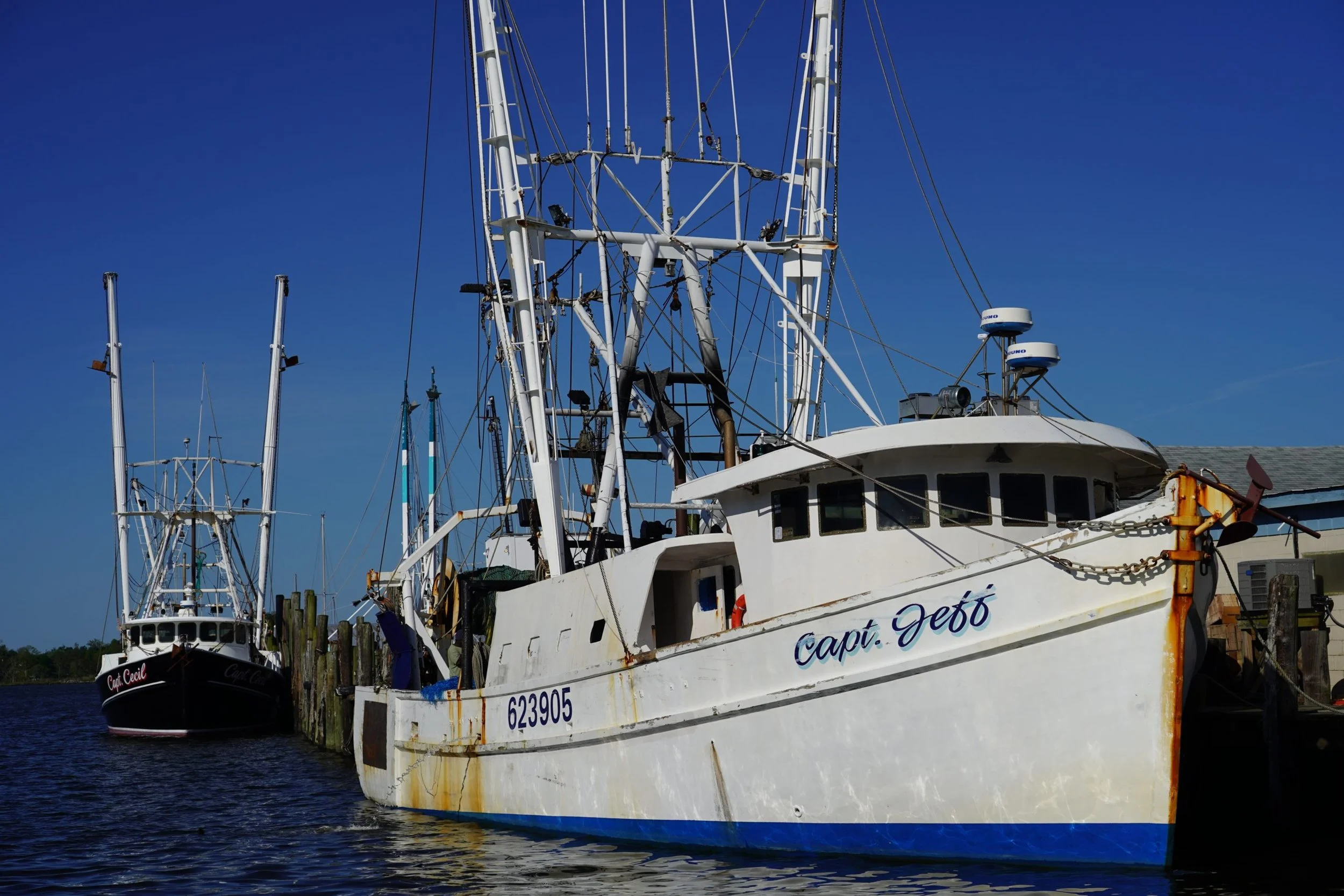OPINION: Is it time to break up marine fisheries?
By Nelson Paul, for Carolina Journal
It was a warm late spring afternoon in 1968 when Faye Nelson, my seventh-grade teacher, decided to take an impromptu, after lunch, field trip to the Carteret County Courthouse. It was a short walk from Beaufort Central Middle School, down Queen Street and then a right on Cedar, with 25 pre-delinquents in tow. I am not sure it was announced, or if she had a shred of parental permission, but there we were, filling the back three rows of a session of open court.
On this particular day, the judge happened to be running through a long list of fisheries cases. Lem Hardy, a well-known Marine Fisheries officer, was up, and the characters and the stories behind the fisheries violations captivated my 12-year-old mind.
In one particularly memorable case, Officer Hardy had ticketed a defendant for stamping what he had claimed were “scallops” from skate wings. My young mind considered the venture to be creative and enterprising, outside the scallop claim. Skates are not much good for anything, and with their regular diet of bay scallops, the sampling probably passed the taste and smell test of most people outside the coastal area, particularly if served with lots and lots of butter. The judge, however, didn't see any humor in the situation. Maybe if the defendant had marketed them as “Skallops” instead of scallops, he would have escaped the fraud charge and subsequent fine.
The NC Division of Marine Fisheries (NCDMF) has been about the business of regulating the harvest of commercial fisheries species for about 200 years. Precursor to the present organization, the concept of managing coastal fisheries was originally formed by the General Assembly in 1822 to regulate the oyster industry. The role was added to and expanded on to include other fisheries over the years, hence, the present organization. Based on this history, NCDMF is probably the oldest regulatory agency in the State of North Carolina. But don't break out any fireworks, they don't need any more than what they have.
In their long history of regulating commercial fisheries, taking on the licensing of recreational fishermen has undoubtedly been the most defining change in the NCDMF role. This move altered the organization's focus from solely regulating and licensing 5,000 or so commercial fisherman to adding nearly 500,000 recreational, or hook and line, fishermen to their clientele. The additional $7 million or so, per year, in license fees, is certainly a strong enough incentive that no self-respecting government agency would refuse. As it turns out, the move may have been the poison pill that took NCDMF into the realm of divided loyalties. And the Bible teaches that no one can serve two masters.
The numbers are fuzzy, as there is an unknown amount of overlap between the recreational and commercial fishing groups, and probably half the licensed commercial fishermen are presently inactive. Still, even approximate numbers suggest this seemingly innocent expansion created a 100 to 1 advantage to the recreational anglers. This wouldn't be such a problem if there weren't some of the hook and line fishermen interested in curb-stomping the relatively small number of commercial fishermen into extinction. Majority rules, right? A David and Goliath situation for sure, but this time, looks like the Philistines are going to put the “W” under their name in the record book.
So, if that is the case, and the commercial fishermen lose this battle, is it now time to break up NCDMF? When the salt has become tasteless, what is it good for?
Shouldn't the Wildlife Resources Commission (WRC) be regulating all recreational fishing? They have a huge amount of experience issuing hunting and freshwater fishing licenses, and also with conducting angler law enforcement. The WRC officers are out there regardless, checking boating registrations and boating safety, even in coastal waters. And wouldn't the angler license fees be better utilized in developing boating access areas to meet the high demand, benefiting both recreational and commercial fishermen?
Additionally, with the abundance of fisheries research power that already exists with the UNC Lab and NC State facilities literally within walking distance of NCDMF's main Morehead City office, should NCDMF be conducting their own research? Additional research capacity also exists not very far away in Beaufort at the National Marine Fisheries Service and Duke Marine Lab facilities on Pivers Island.
Beyond the sampling necessary to make day-to-day fisheries decisions, should NCDMF even be maintaining a research arm? The case could be made that NCDMF, being a regulatory agency, shouldn't be doing “research” at all, because of the very real danger of a conflict of interest. Pursing research towards a predetermined regulatory policy goal is a very real possibility, even if unintentional. So, as a backstop to integrity, shouldn't that type of research should be conducted by third-parties, at arms-length, and not in-house?
Furthermore, the move towards directly regulating water bodies, and not fisheries gear, is something fisheries agencies have been trying to move towards for decades. For government, it's just easier and more efficient to keep people out of an area than it is to deal with them individually.
Per law, the director of NCDMF has the responsibility of opening and closing locations as part of his/her duties, in order to manage the efficient use of the commercial marine resources. But when permanent closures of large water bodies are contemplated for their environmental integrity, wouldn't it be better to designate the area as an Area of Environmental Concern (AEC), and regulate it that way? Designating coastal areas as AEC's is the responsibility of the Coastal Resources Commission, not the NCDMF. Isn't it a stretch for NCDMF to extend their legislative proclamation authority to permanently close large water bodies when a sister agency can better handle that?
Additionally, how large should a regulatory agency be in proportion to the regulated community? The NCDMF has approximately 300 employees and a budget of around $30M. Statistics show the shrimping industry, the current industry that hook and line interests have targeted for extinction (gill-netters, you're next!), consists of only approximately 400 entities with annual sales of $22.3 million. NCDMF statistics show a shrinking number of participants in the commercial fishing industry in general, by anywhere from a quarter to half, over the past two decades. What happens when the regulatory agency grows to be as large or more significant than the community it's regulating?
So, 200 years is a long time. NCDMF can trace its roots to an era where the primary modes of transportation in the coastal area were sailing shallops, horseback and walking. The fishermen of that time, and the legacy regulators, like Officer Lem Hardy, had a toughness and persistence that is unfathomable to us today. But missteps along the way can easily take both people and organizations off the path of righteousness.
When the NCDMF invited the recreational hook and line fishermen into the camp, was that the end of commercial fishing? Has NCDMF served its purpose, and is it now time to break it up?
Nelson Paul is a real estate agent, former NC Coastal regulator, inventor, husband, and father of four, and a grandfather of seven.



